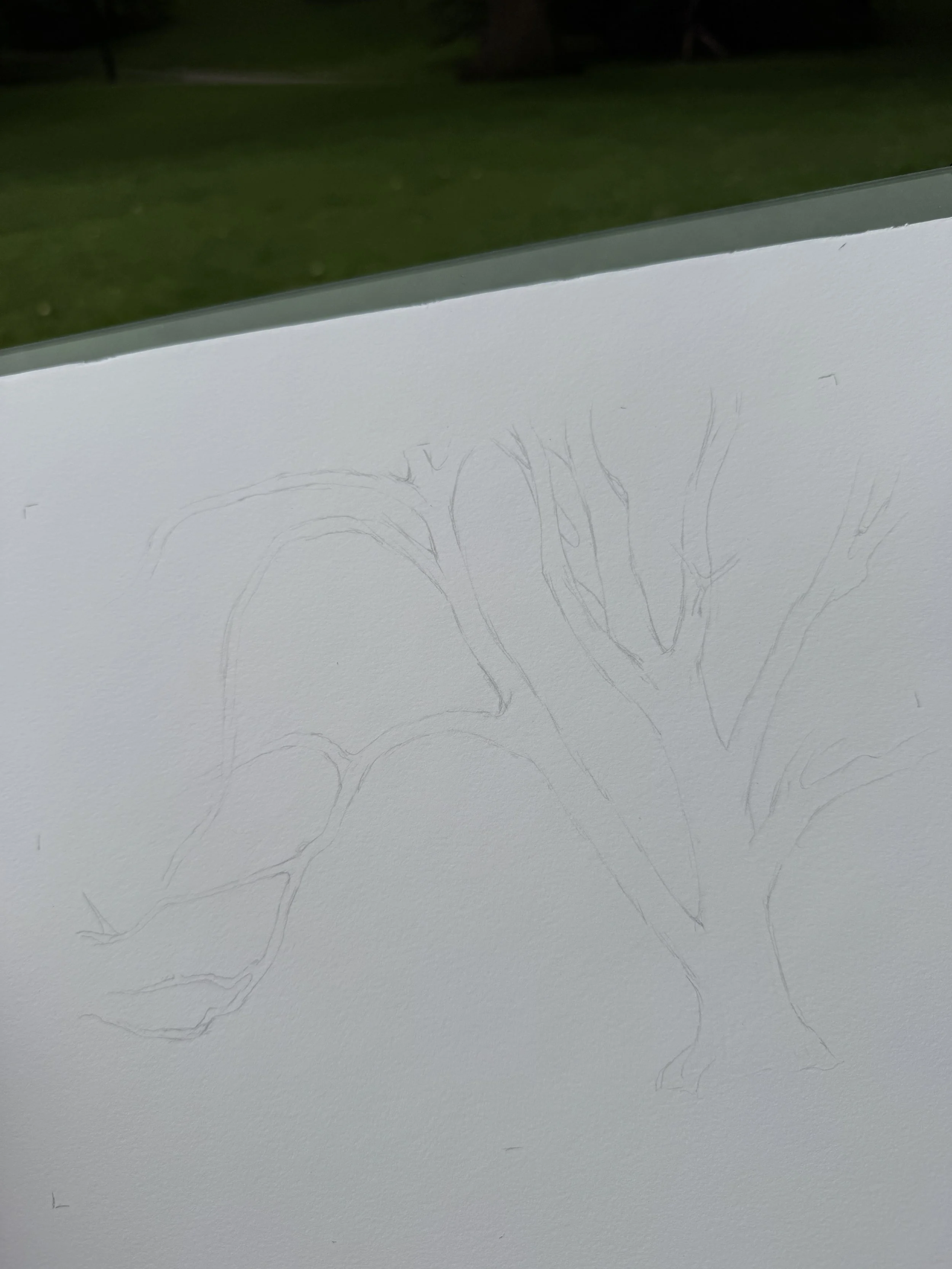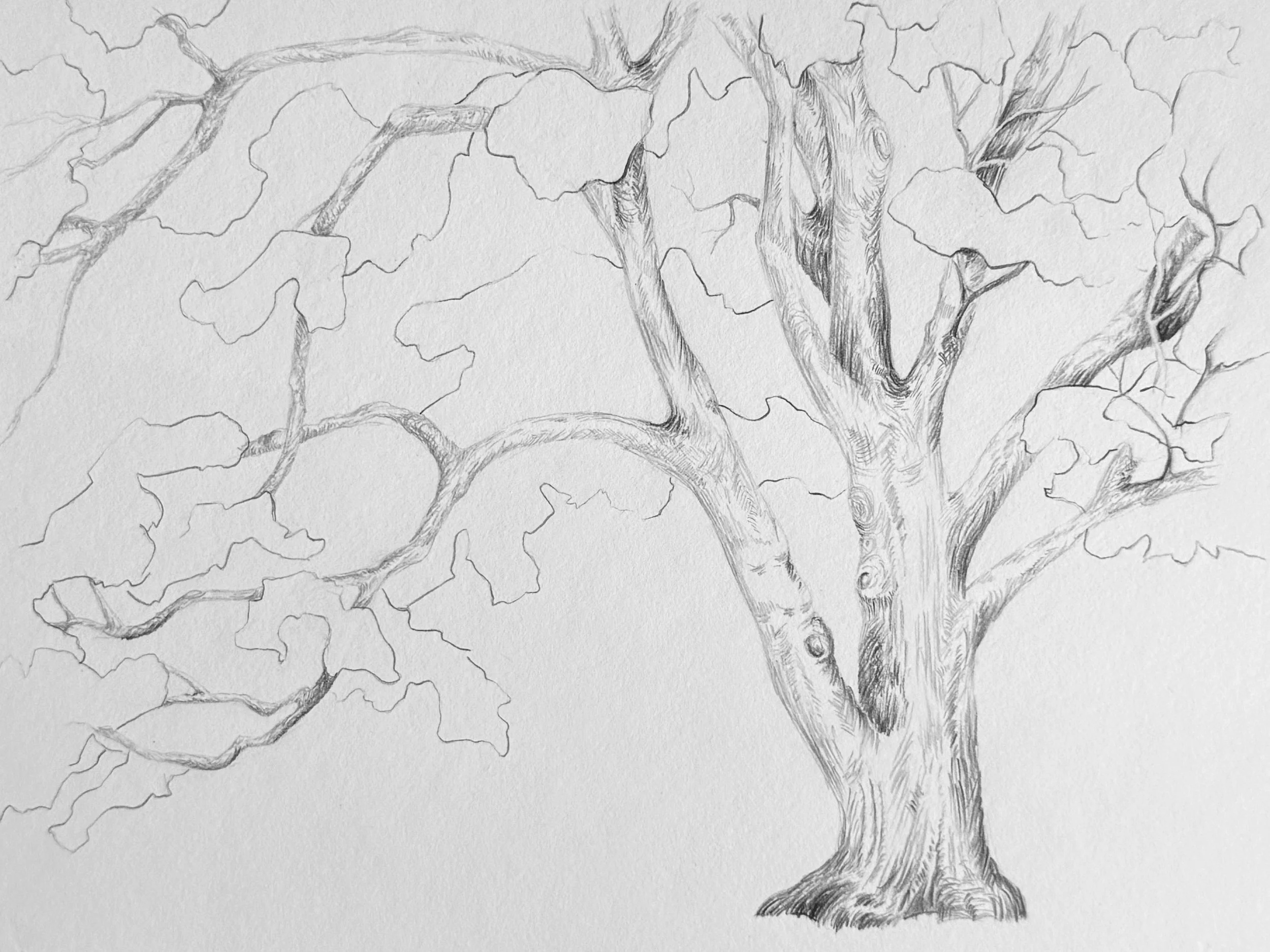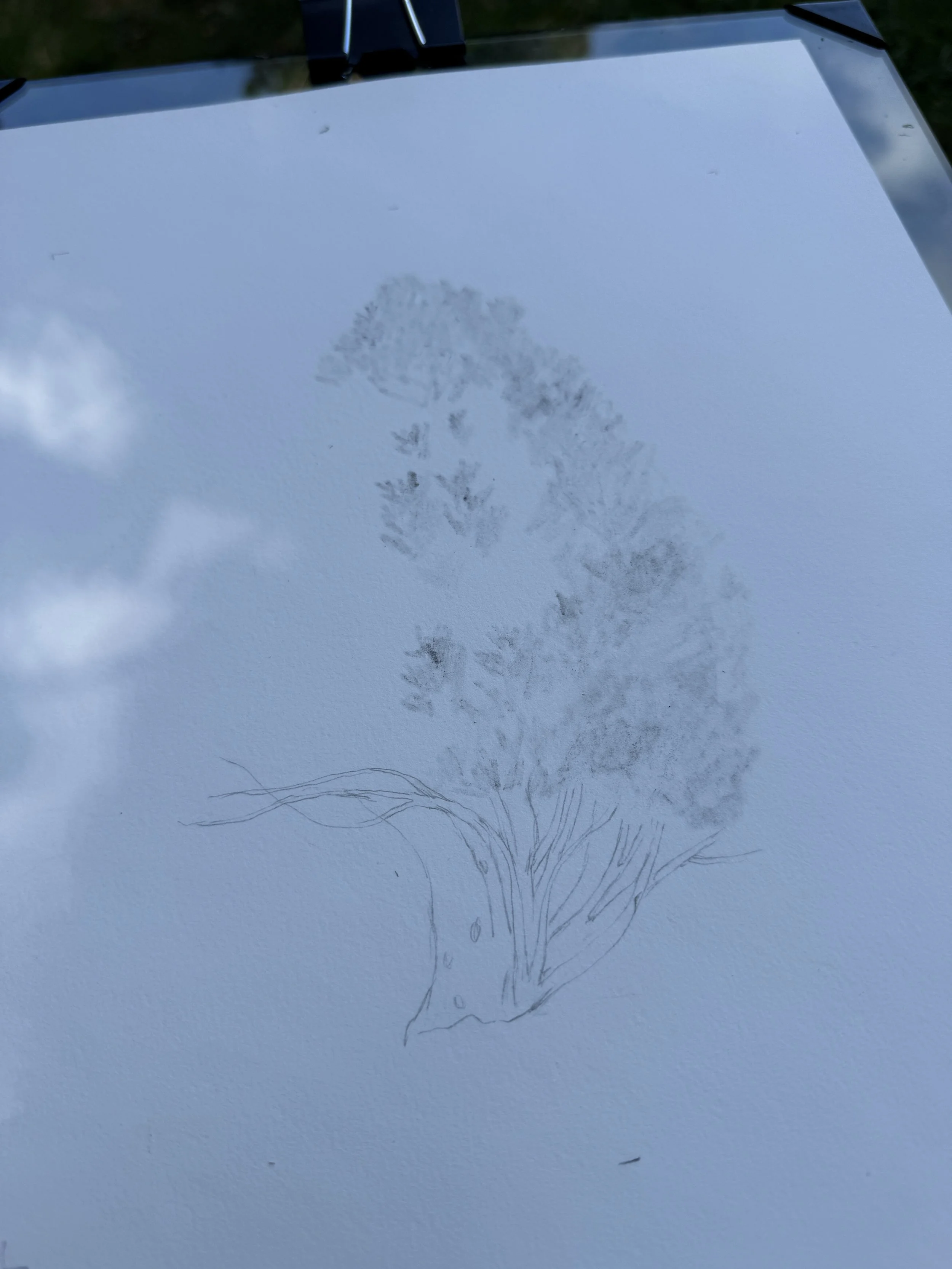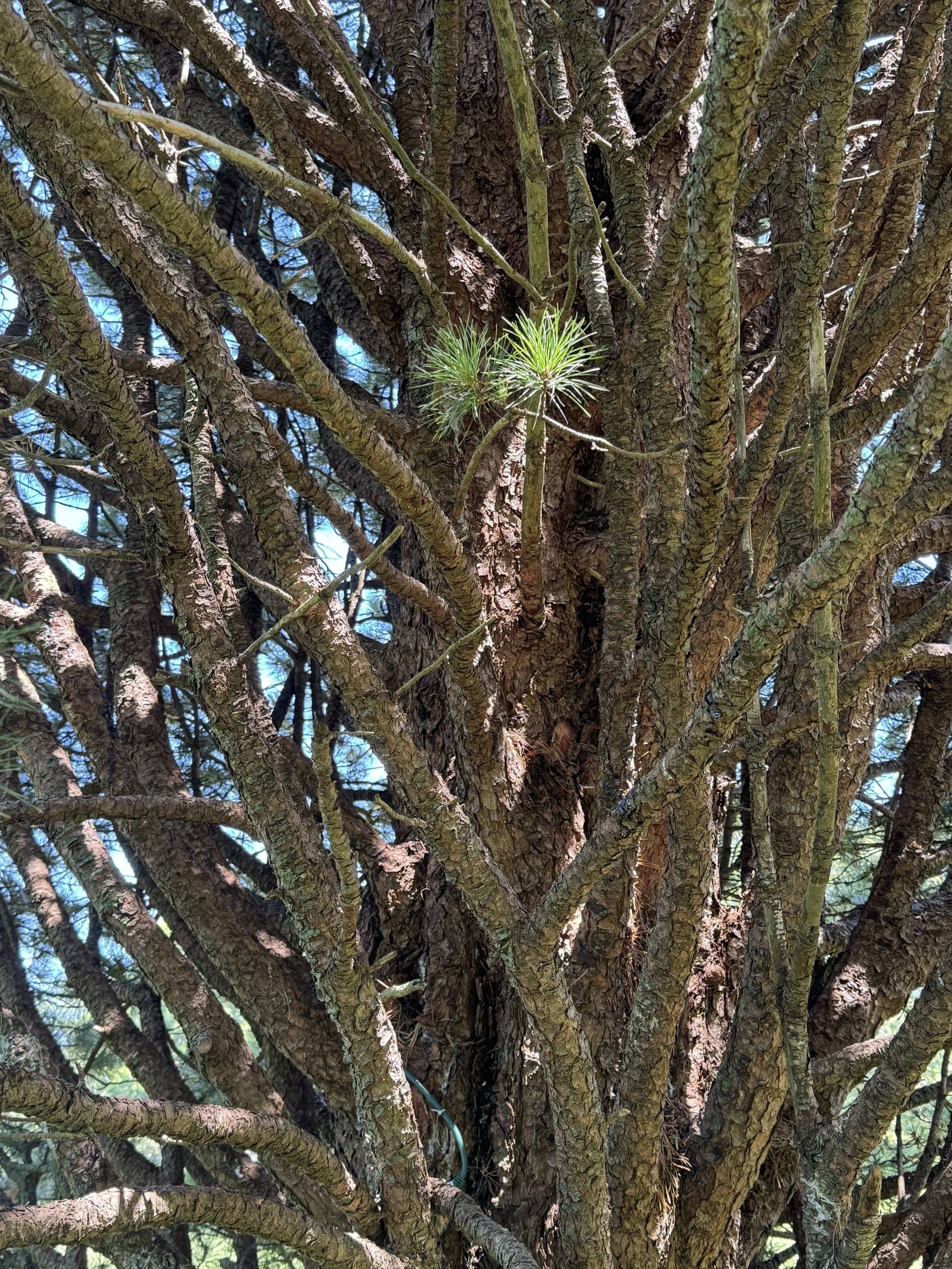Day 3: Champion Trees: Sycamore Maple and Swiss Stone Pine
What makes a tree a champion?
“In Rhode Island, the term Champion Tree refers to the largest documented specimen of a given tree species within the state, recognized by the Helen Walker Raleigh Champion Tree Program, administered by the Rhode Island Tree Council”.
To learn more about the increbile work trees do for our planet click HERE.
It’s warm and humid here, so I started early this morning and set up under the Sycamore Maple tree, one of the park’s Champion Trees and the largest in Rhode Island. I spent three hours drawing, and in that time, I felt like I truly got to know the tree. Sitting still and slowly sketching the angle of each main branch and the clusters of leaves, just pencil to paper, was deeply rewarding. Now, whenever I walk by, I feel like I should wave, like it's an old friend. I know that sounds cheesy, but honestly, I think we’re friends now. These incredible trees are bioindicators of air pollution levels, and their leaves can capture pollutants, improving air quality. The leaves can be used as a natural dye.
Sycamore Maple, graphite on paper, 14”x11”
The Swiss Stone Pine is another Champion Tree in Wilcox Park. At first, it didn’t stand out to me, but once I sat with it and really observed, I started to appreciate it. I pulled out my smudger and 6B graphite pencil to capture the deep shadows and clusters of pine needles. It’s the first conifer I’ve drawn in the park, and there are so many unusual ones to discover here. The more I researched the Swiss Stone Pine, the more fascinating it became. It turns out this is where pine nuts come from—and now I understand why they’re so expensive. You have to crack open the cone and dig out each seed from a tough casing, and it takes two full years for a cone to mature. Nature really doesn’t rush, but it’s full of purpose. Rosin, used on violin bows, also comes from this tree.
Swiss Stone Pine, graphite on paper, 11”x14”












